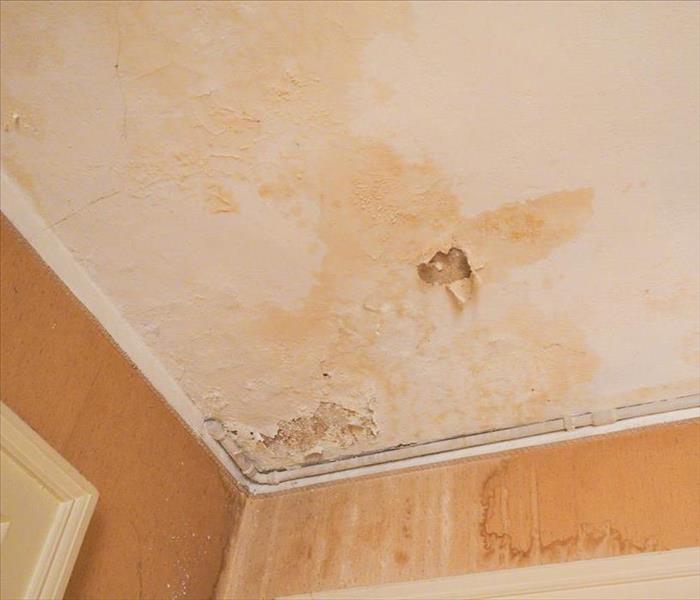What Causes Ceiling Tile Discoloration?
1/14/2021 (Permalink)
Ceiling tile discoloration at your Peoria, AZ, business is often the first sign of a larger problem. Water buildup can lead to ceiling tile mold and disintegration, so it is important to act quickly.
Causes of Tile Discoloration
Oftentimes, ceiling discoloration is the result of a water stain. Water accumulation causes brown or yellowish spots to appear. Some common causes for these stains are
- Plumbing leaks
- Roof leaks
- HVAC condensation
In some cases, the water buildup allows for mold growth to occur. A ceiling tile mold infestation can result in even more damage to the tile.
What To Do Next
In order to minimize damage, stop the water as soon as possible. First, identify the source of the water damage. What is the closest supply line, HVAC component, etc. to the stain? This should be where you begin your search. However, water flows freely and the primary water source may be further away. In some cases, you may have to turn off the water to the building temporarily. You may need a plumber or HVAC technician to help you identify the source and repair the problem.
After the water source has been identified and addressed, it is time to restore the ceiling. The tiles are often porous, so dirt and grime can build up quickly. If this is the case, or if there is mold, the affected tile may need to be replaced. Smaller stains caused by clean water may only need a fresh coat of paint. A certified restoration service can help you determine if the tile is salvageable.
Although ceiling tile mold can be a serious problem, you can prevent more damage from occurring by acting quickly. Find and stop the flow of water then repair or replace all affected tiles. To help prevent damage in the future, routinely inspect the ceiling tiles for signs of water damage.



 24/7 Emergency Service
24/7 Emergency Service
